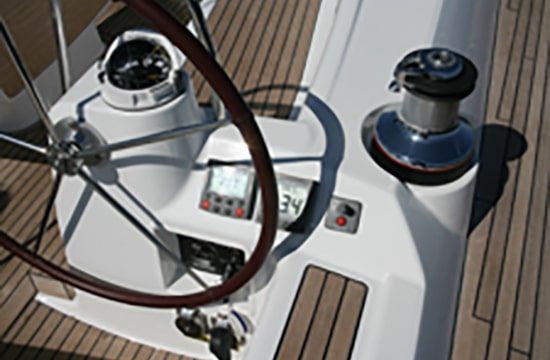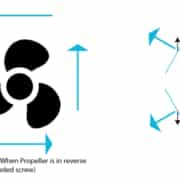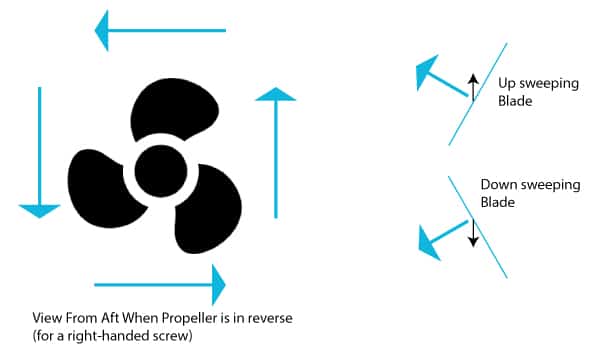Propwalk – The Wash Lift effect
The wash-lift effect has been documented heavily by Dave Geer who is one of the world’s leading propeller engineers.
Dave wrote a white paper on the p-factor effect combined with this wash lift effect. We contacted Dave and asked him permission to make this white paper available to NauticEd students. He graciously accepted. For more in-depth reading on this, here is Dave Geer’s propwalk white paper for further interesting reading.
As the propeller turns and slices the water with its blades, you imagine how it would push water out of the tilted blade, but not exactly directly horizontally. An upsweeping blade pushes water up as well as horizontally and a down-sweeping blade pushes water down as well as horizontally.
Similarly, the blade sweeping sideways at the top of the rotation pushes water sideways one way as well as aft. At the bottom sideways sweep of the propeller, the water is pushed in the opposite direction as well as aft. The horizontal component of the water movement creates thrust. The top and bottom sweeps sideways movements of the blades cancel each other out. The upsweep lifts water up under the hull and the down sweep sucks water down.
For a right-hand screw in reverse, water is pushed up creating a high-pressure wave on the starboard side of the hull. The water being pulled down on the port side of the hull creates a trough. The hull then slides sideways into the trough.
See the following animation, where you can see the wave forming which has the effect of a fire hose under the water pushing the hull sideways.
The wash-lift effect is present in boats with tilted shaft arrangements and sail drive arrangements. However, the propwalk effect is vastly reduced when only operating with a sail drive. If you think about the tilted shaft effect, the upwash is greater because the blade is twisted more up on the upswing side.
The result is that tilted drive shaft boats have a much higher propwalk effect than sail drives. In many saildrive boats, you won’t notice the propwalk.








